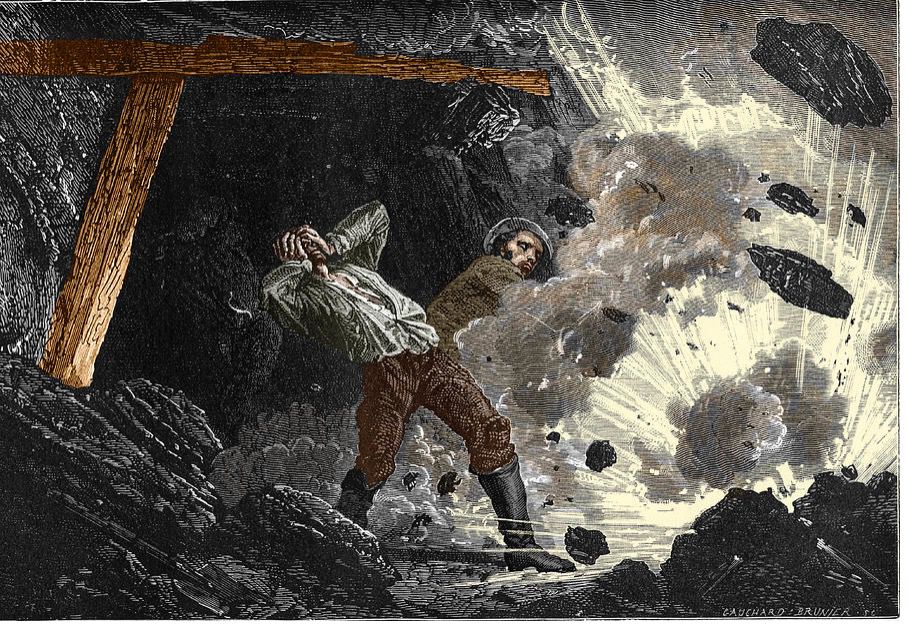At Work
‘I knew only three men through the years to lose an eye by sparks
or metal or slag. A wonderful low figure, for sparks and splashes
of molten metal and slag were everywhere.’
P. McGeown, Heat the Furnace Seven Times More (1968)

Nearly half of reported burns in eighteenth century Britain were work related. From steam power to electricity, each development brought new risks to men, women and child workers. While processes in small workshops could be as dangerous as any large factory, it was the scale of some industries that initially drew the attention of reformers.
Protective legislation like the Factory Acts (from 1833) took decades to be rolled out to other industries - from the mines in places like Wales to the foundries of Scotland and the Midlands, to the chemical industry in Runcorn, Teeside and Yorkshire, there remained few safety regulations.
With so many burns hazards in industry - steam, gas, chemicals, hot metal, open flame and boiling water - the number of burns and scalds reported to the factory inspectors regularly totalled 5% of all injuries. Yet such injuries were a key hazard for men and women who worked in the home, including those in domestic service. With automation and de-industrialisation, burns in heavy industry have gradually declined since the Second World War.
In the first book-length study on burns in English (1797), Dr Edward Kentish discussed injuries to workers, primarily miners. Commonly injured by explosions caused by the ignition of inflammable gases that accumulated underground, such as that pictured above, miners suffered burns, as well as cuts and crush injuries. Innovations like the Davy Lamp, and better ventilation, eventually made mining safer.
Wellcome Collection CC-BY
Industrialisation is most often associated with heavy industries like metal work. Given the danger of molten metal burning through workers’ clothing and ending up in boots, foundry workers kept their boots untied to remove them more quickly in emergencies.
Birmingham Accident Hospital files (Queen Elizabeth Hospital/University of Birmingham)
By the mid-twentieth century, only one third of burns seen in hospital occurred in industry. However, workplace burn and scald injuries have remained prevalent in the service industry, whether occurring in laundries or coffee shops, often resembling the hazards formerly faced by domestic servants employed in homes across the country.
Author's own